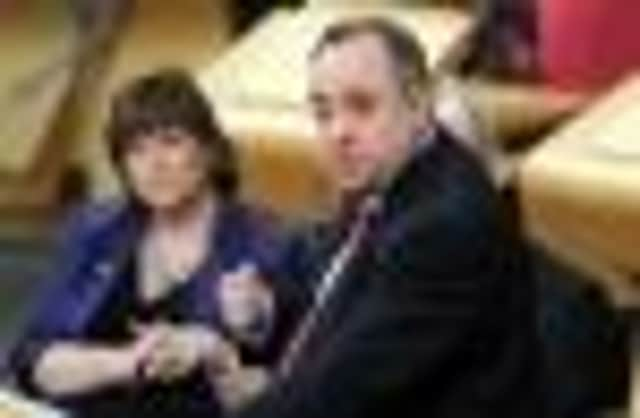Independent Scotland ‘would pay more to borrow’


In a major new book on Scotland’s constitutional future, Professor Charles Goodhart – a former member of the Bank of England’s monetary policy committee – says jittery markets would charge Scotland a much higher premium to fill its deficit than London.
Rates “could easily be above 1 per cent” more than the UK and could potentially spike far higher, he writes in Scotland’s Future, a book edited by the former chief economist at the Scottish Government, Professor Andrew Goudie.
Advertisement
Hide AdAdvertisement
Hide AdOther economists have estimated that even such a small premium above the UK could add an extra £1 billion a year on Scotland’s borrowing costs.
The position is a direct contradiction of claims by the First Minister Alex Salmond who last year said that Scotland would pay rates “no worse” than the UK does presently.
Prof Goodhart has been backed by several other leading economists in Scotland who warn that markets have been spooked by the Eurozone crisis and are likely to be wary of a new country in need of money.
Prof Goodhart writes: “With expectations of continuing fiscal deficits and, in the light of the travails of the eurozone periphery, the markets would apply some significant credit risk differential to Scottish debt (whatever the new Scottish Government might say and however unfair that might seem to some).”
As a result, Scotland would require a “significantly higher interest rate than UK gilts”. That, he writes, “could easily be above 1 per cent even if economic events went quite well, potentially spiking far higher, as seen in the eurozone, if economic developments should deteriorate.”
Analysis based on last year’s debt figures by Prof Brian Ashcroft of Strathclyde University’s Fraser of Allander institute concluded that if Scotland paid a 4 per cent interest rate compared to the UK’s 3 per cent, outlays would rise by £931 million.
Prof Ashcroft wrote: “Even a modest premium above UK Treasuries . . . would cost approximately an extra £1bn a year.” He has also declared that “we should expect the Scottish Government to have to pay a risk premium in its borrowing compared to the UK”.
Prof Goodhart writes that one “obvious consequence” of the higher debt interest payments is that “the Scottish Government would be compelled to run a convincingly prudent fiscal position compared to the rest of the UK in order to maintain the confidence of the markets”.
Advertisement
Hide AdAdvertisement
Hide AdIn his leaked document last week, Finance Secretary John Swinney warned that interest payments were expected to rise from “£3.7bn in 2010-11 to £5.2bn in 2016-17”.
A Treasury spokesman said: “Many independent commentators have said it is highly unlikely that an independent Scotland would be able to borrow at the same low rates as the UK does now on Scotland’s behalf.”
A Scottish Government spokesman said: “Scotland’s institutions and government have a strong track record of political and financial competence and the official GERS statistics show Scotland contributes a greater share of public sector revenues at 9.9 per cent than the 9.3 per cent it receives in UK public spending, including a per capita share of UK debt interest payments. Earlier this month the larger UK economy lost its triple-A credit rating while many smaller economies retain theirs.”